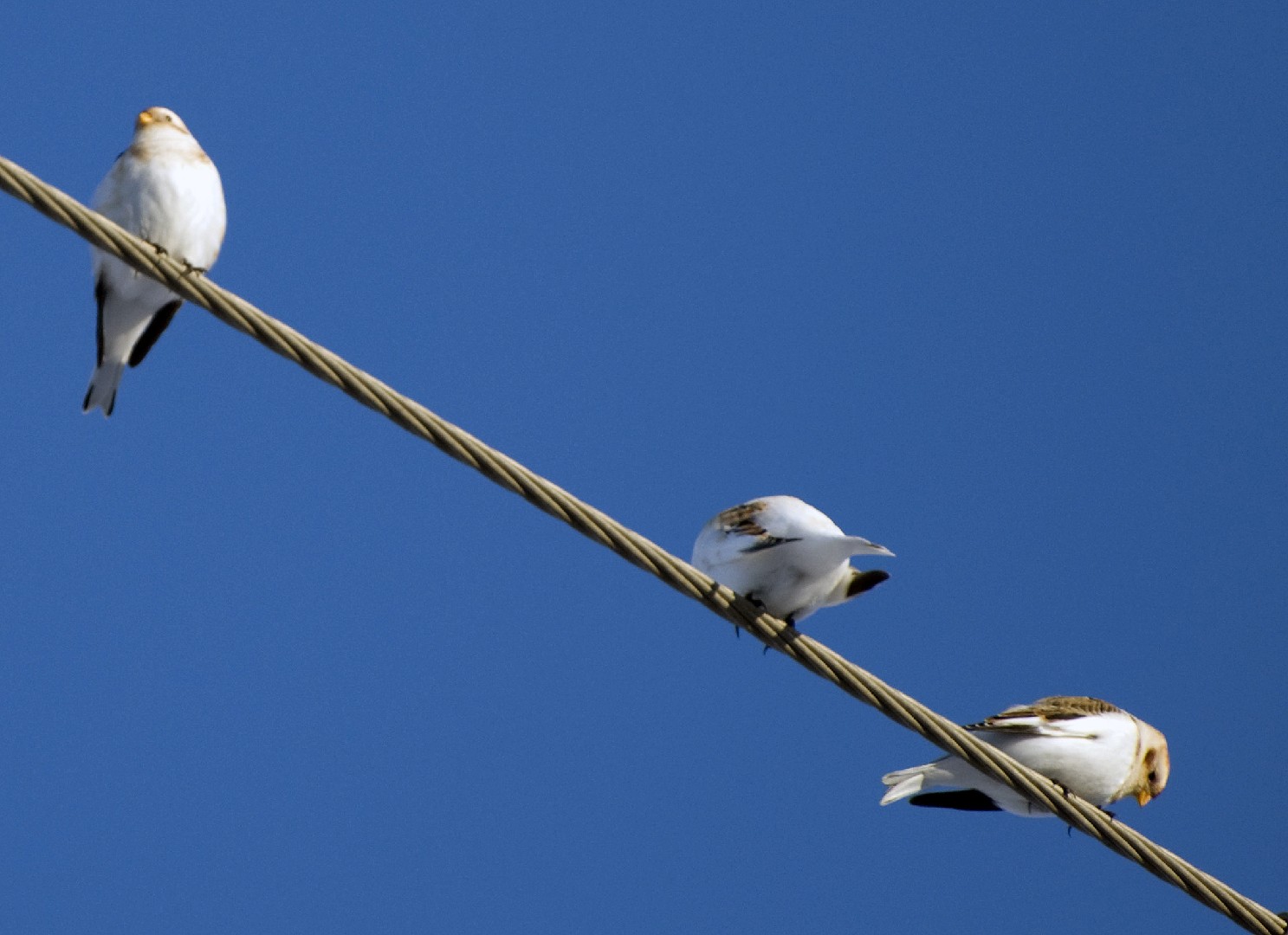Mckay's Bunting
A species of Snow and Mckay'S Buntings, Also known as Mckay's Snow Bunting Scientific name : Plectrophenax hyperboreus Genus : Snow and Mckay'S Buntings
Mckay's Bunting, A species of Snow and Mckay'S Buntings
Also known as:
Mckay's Snow Bunting
Botanical name: Plectrophenax hyperboreus
Genus: Snow and Mckay'S Buntings
Content
Description General Info
 Photo By Bering Land Bridge National Preserve , used under CC-BY-2.0 /Cropped and compressed from original
Photo By Bering Land Bridge National Preserve , used under CC-BY-2.0 /Cropped and compressed from original Description
This species closely resembles snow bunting in all plumages, but is whiter overall. The breeding plumage of the male is almost purely white, with only small areas of black on the wingtips and tail. The breeding female has a streaked back. Non-breeding birds also have warm brown patches on cheeks, crown, and the sides of the neck. McKay's bunting is larger on average than the snow bunting. It is 18 cm (7.1 in) long and weighs from 38 to 62 g (1.3 to 2.2 oz), with an average of 54.5 g (1.92 oz). Among standard measurements, the wing chord is 10.1 to 12.2 cm (4.0 to 4.8 in), the tail is 6.4 to 7.5 cm (2.5 to 3.0 in), the bill is 1.1 to 1.3 cm (0.43 to 0.51 in) and the tarsus is 2 to 2.4 cm (0.79 to 0.94 in). 
Size
13 - 23 cm
Life Expectancy
4.8-5 years
Nest Placement
Ground
Feeding Habits
Mckay's Bunting mostly consumes winter seeds from weeds and grasses, while its summer diet includes a variety of seeds, buds, and insects. It has adapted to forage these foods in its specific habitat.
Habitat
The mckay's Bunting is typically found in cold and remote habitats, preferring vegetated tundra and rocky uplands for breeding. Their breeding environment includes wet meadows, and they can also be found around sea cliffs and snowfields. A significant portion of them resides in rocky uplands and vegetated tundra, with fewer numbers inhabiting wet meadows and coastal areas. Outside the breeding season, these birds migrate to coastal marshes and shingle beaches, and they are also known to forage in agricultural fields where vegetation is exposed in winter.
Nest Behavior
The exact nesting behavior of mckay's Bunting is largely unknown, but it is assumed to be similar to the Snow Bunting, including singing during display flights and selecting secure nesting sites to evade predators like Arctic foxes.
Nest Characteristics
Mckay's Bunting typically nests in protected cavities like deep crevices in cliffs, under rocks, or in hollow driftwood, using a shallow cup of grass lined with finer grasses for the nest.
Dite type
Granivorous
General Info
Feeding Habits
Bird food type
Bird Feeder Type

Platform

 Photo By Bering Land Bridge National Preserve , used under CC-BY-2.0 /Cropped and compressed from original
Photo By Bering Land Bridge National Preserve , used under CC-BY-2.0 /Cropped and compressed from original Scientific Classification
Phylum
Chordates Class
Birds Order
Perching birds Family
Longspurs and snow buntings Species
Mckay's Bunting